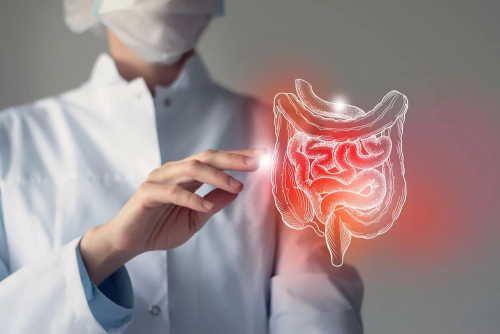東京で信頼できる警備会社をお探しなら|安心・安全のセキュリティサービス
A Comprehensive Guide to the Differential Diagnosis of Crohn’s Disease
Crohn’s disease (CD) is a chronic inflammatory bowel disease (IBD) that causes inflammation anywhere in the gastrointestinal (GI) tract, from the mouth to the anus. This disease presents with symptoms such as abdominal pain, diarrhea, fatigue, and weight loss. However, diagnosing Crohn’s disease can be challenging due to its overlap with many other GI disorders. Accurate differential diagnosis is crucial to ensure the appropriate management and treatment of the condition. This guide outlines the key conditions to consider when diagnosing Crohn’s disease and provides an overview of the diagnostic process.
Crohn’s disease (CD) is a chronic inflammatory bowel disease (IBD) that causes inflammation anywhere in the gastrointestinal (GI) tract, from the mouth to the anus. This disease presents with symptoms such as abdominal pain, diarrhea, fatigue, and weight loss. However, diagnosing Crohn’s disease can be challenging due to its overlap with many other GI disorders. Accurate differential diagnosis is crucial to ensure the appropriate management and treatment of the condition. This guide outlines the key conditions to consider when diagnosing Crohn’s disease and provides an overview of the diagnostic process.

1. Understanding Crohn's Disease
Crohn’s disease is characterized by persistent inflammation that can affect any segment of the GI tract, but it most commonly involves the terminal ileum and colon. The inflammation can penetrate all layers of the bowel wall, leading to complications such as fistulas, strictures, and abscesses.
Common symptoms of Crohn’s disease include:
- Abdominal pain(often localized to the lower right quadrant)
- Chronic diarrhea(sometimes with blood)
- Weight loss
- Fatigue
- Malabsorption, leading to nutritional deficiencies
- Low-grade fever
The varied symptoms and the potential for overlapping with other conditions make it essential to conduct a comprehensive differential diagnosis.
2. Key Conditions to Consider in Differential Diagnosis
Several diseases mimic the symptoms of Crohn’s disease. A thorough evaluation of the clinical presentation, history, and diagnostic tests can help distinguish between these conditions.
a. Ulcerative Colitis (UC)
Both Crohn’s disease and ulcerative colitis are forms of inflammatory bowel disease (IBD), but they differ in key aspects:
- Location: UC is restricted to the colon and rectum, while Crohn’s disease can affect any part of the GI tract.
- Inflammation pattern: UC causes continuous inflammation, whereas Crohn’s presents with patchy, "skip" lesions.
- Histology: UC typically causes superficial mucosal ulceration, while Crohn’s disease affects the entire bowel wall with transmural inflammation.
b. Infectious Gastroenteritis
Infections from bacteria, viruses, or parasites can mimic the symptoms of Crohn’s disease, such as diarrhea and abdominal pain. However, infectious gastroenteritis has the following distinguishing features:
- Duration: Infectious causes are typically self-limiting and resolve in a few days to weeks, whereas Crohn’s disease is chronic.
- Fever: High fever is more common in infections than in Crohn’s disease.
- Stool culture: Pathogens such as Salmonella or Shigella detected in stool samples suggest an infectious cause.
c. Irritable Bowel Syndrome (IBS)
IBS is a functional GI disorder that can present with symptoms similar to Crohn’s, such as abdominal pain and changes in bowel habits. However, key differences include:
- Absence of inflammation: IBS does not involve the intestinal inflammation seen in Crohn’s disease.
- Blood in stool: Blood is a common symptom of Crohn’s disease but is rare in IBS.
- Weight loss: Significant weight loss is uncommon in IBS but is a typical symptom of Crohn’s disease.
- Endoscopic findings: Colonoscopy will show normal mucosa in IBS, while Crohn’s disease presents with ulcers or strictures.
d. Celiac Disease
Celiac disease, an autoimmune disorder triggered by gluten, can present with symptoms similar to Crohn’s disease, such as diarrhea and weight loss. However, the following features can help differentiate them:
- Trigger: Celiac disease is precipitated by gluten, while Crohn’s disease is not directly affected by diet.
- Histology: In celiac disease, biopsies show villous atrophy, while Crohn’s shows transmural inflammation.
- Serology: Testing for antibodies to tissue transglutaminase (tTG) or endomysial antibodies is key for diagnosing celiac disease.
e. Gastrointestinal Tuberculosis (GI TB)
In regions with high rates of tuberculosis, gastrointestinal TB can mimic Crohn’s disease, particularly in the ileocecal region. Differentiating GI TB from Crohn’s involves considering:
- History of TB exposure: A history of pulmonary or extrapulmonary tuberculosis raises suspicion for GI TB.
- Imaging: GI TB often shows localized strictures and concentric ulcerations, whereas Crohn’s disease typically has patchy inflammation.
- Histology: Biopsy of the affected area can show granulomas and acid-fast bacilli (AFB), which are characteristic of TB.
- Response to treatment: A positive response to anti-tuberculous therapy can help confirm GI TB.
f. Diverticulitis
Diverticulitis involves inflammation of diverticula in the colon and can present with abdominal pain and fever, similar to Crohn’s disease. Key differences include:
- Location: Diverticulitis typically affects the sigmoid colon, whereas Crohn’s disease can affect any part of the GI tract.
- Imaging: CT scans can help distinguish diverticulitis, which typically shows localized inflammation around the diverticula, from Crohn’s disease.
- Histology: Diverticulitis does not show full-thickness inflammation typical of Crohn’s disease.
g. Colorectal Cancer
Advanced colorectal cancer can mimic Crohn’s disease, especially with symptoms like weight loss and abdominal discomfort. Key differentiators include:
- Age of onset: Colorectal cancer is more common in older adults, whereas Crohn’s disease often presents in young adults.
- Blood in stool: Colorectal cancer may cause occult blood in stool, while Crohn’s often presents with visible blood.
- Imaging and biopsy: Colonoscopy typically reveals masses or irregular lesions in cancer, while Crohn’s disease shows characteristic signs like strictures or fistulas.
h. Mesenteric Ischemia
Mesenteric ischemia can present with abdominal pain and bloating, mimicking Crohn’s disease, particularly in older patients. Differentiation involves:
- Pain: Mesenteric ischemia often causes pain out of proportion to physical findings, whereas Crohn’s disease pain is localized to the inflamed area.
- Imaging: CT or MRI angiography can identify vascular occlusions, which are not seen in Crohn’s disease.
3. Diagnostic Workup
A combination of clinical evaluation, laboratory tests, imaging studies, and endoscopic procedures are required to diagnose Crohn’s disease and differentiate it from other conditions.
a. Clinical Evaluation
A thorough history and physical examination are essential to assess:
- Family history of IBD
- Any recent infections, travel history, or use of medications that may affect the GI tract
b. Laboratory Tests
- C-reactive protein (CRP)and erythrocyte sedimentation rate (ESR): Elevated levels suggest active inflammation.
- Fecal calprotectin: Useful for distinguishing inflammatory bowel diseases (IBD) from functional disorders like IBS.
- Blood tests: Anemia and electrolyte abnormalities may suggest Crohn’s disease.
- Anti-Saccharomyces cerevisiae antibodies (ASCA): Although not diagnostic, the presence of ASCA may support a diagnosis of Crohn’s disease.
c. Imaging Studies
- CT/MRI enterography: These imaging techniques are sensitive for detecting inflammation, strictures, fistulas, and abscesses.
- Ultrasound: Especially useful in pediatric patients or where minimizing radiation exposure is a concern.
d. Endoscopy
- Colonoscopy: The gold standard for diagnosing Crohn’s disease, allowing visualization of mucosal changes and biopsy for granulomas.
- Capsule endoscopy: Helpful for visualizing small bowel areas not easily reached by traditional endoscopy.
Conclusion
The differential diagnosis of Crohn’s disease is broad, with many conditions presenting with similar symptoms. A careful and systematic approach, including a detailed patient history, clinical examination, and appropriate diagnostic tests, is necessary for accurate diagnosis. As Crohn’s disease shares features with several other GI disorders, timely identification and differentiation are essential for implementing effective treatment strategies. By utilizing a combination of clinical insights and diagnostic tools, healthcare providers can achieve better outcomes for patients with Crohn’s disease.











